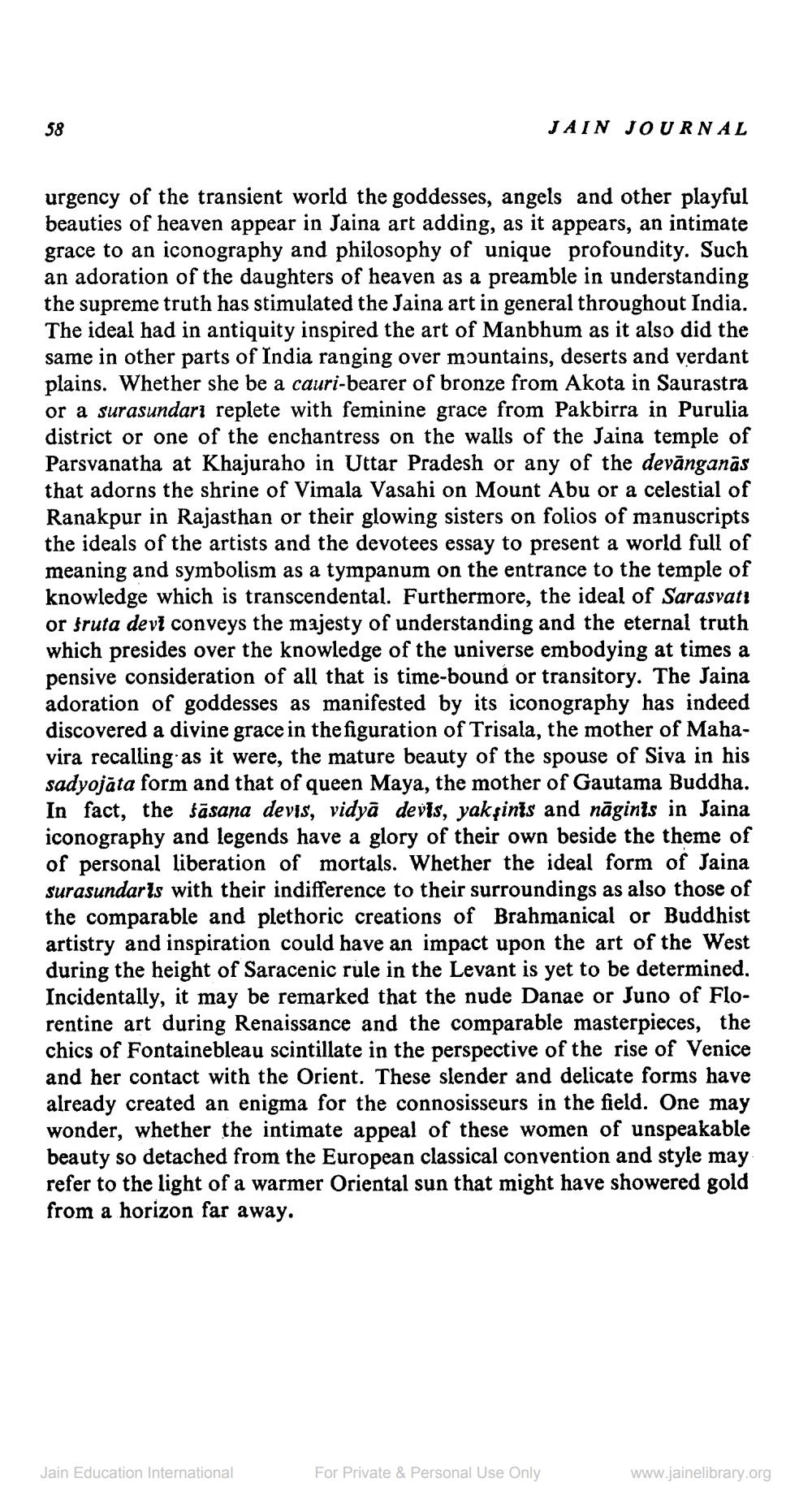________________
58
urgency of the transient world the goddesses, angels and other playful beauties of heaven appear in Jaina art adding, as it appears, an intimate grace to an iconography and philosophy of unique profoundity. Such an adoration of the daughters of heaven as a preamble in understanding the supreme truth has stimulated the Jaina art in general throughout India. The ideal had in antiquity inspired the art of Manbhum as it also did the same in other parts of India ranging over mountains, deserts and verdant plains. Whether she be a cauri-bearer of bronze from Akota in Saurastra or a surasundari replete with feminine grace from Pakbirra in Purulia district or one of the enchantress on the walls of the Jaina temple of Parsvanatha at Khajuraho in Uttar Pradesh or any of the devānganās that adorns the shrine of Vimala Vasahi on Mount Abu or a celestial of Ranakpur in Rajasthan or their glowing sisters on folios of manuscripts the ideals of the artists and the devotees essay to present a world full of meaning and symbolism as a tympanum on the entrance to the temple of knowledge which is transcendental. Furthermore, the ideal of Sarasvati or fruta devi conveys the majesty of understanding and the eternal truth which presides over the knowledge of the universe embodying at times a pensive consideration of all that is time-bound or transitory. The Jaina adoration of goddesses as manifested by its iconography has indeed discovered a divine grace in the figuration of Trisala, the mother of Mahavira recalling as it were, the mature beauty of the spouse of Siva in his sadyojāta form and that of queen Maya, the mother of Gautama Buddha. In fact, the Jāsana devis, vidyā devīs, yakṣinīs and nāginīs in Jaina iconography and legends have a glory of their own beside the theme of of personal liberation of mortals. Whether the ideal form of Jaina surasundarts with their indifference to their surroundings as also those of the comparable and plethoric creations of Brahmanical or Buddhist artistry and inspiration could have an impact upon the art of the West during the height of Saracenic rule in the Levant is yet to be determined. Incidentally, it may be remarked that the nude Danae or Juno of Florentine art during Renaissance and the comparable masterpieces, the chics of Fontainebleau scintillate in the perspective of the rise of Venice and her contact with the Orient. These slender and delicate forms have already created an enigma for the connosisseurs in the field. One may wonder, whether the intimate appeal of these women of unspeakable beauty so detached from the European classical convention and style may refer to the light of a warmer Oriental sun that might have showered gold from a horizon far away.
Jain Education International
JAIN JOURNAL
For Private & Personal Use Only
www.jainelibrary.org




